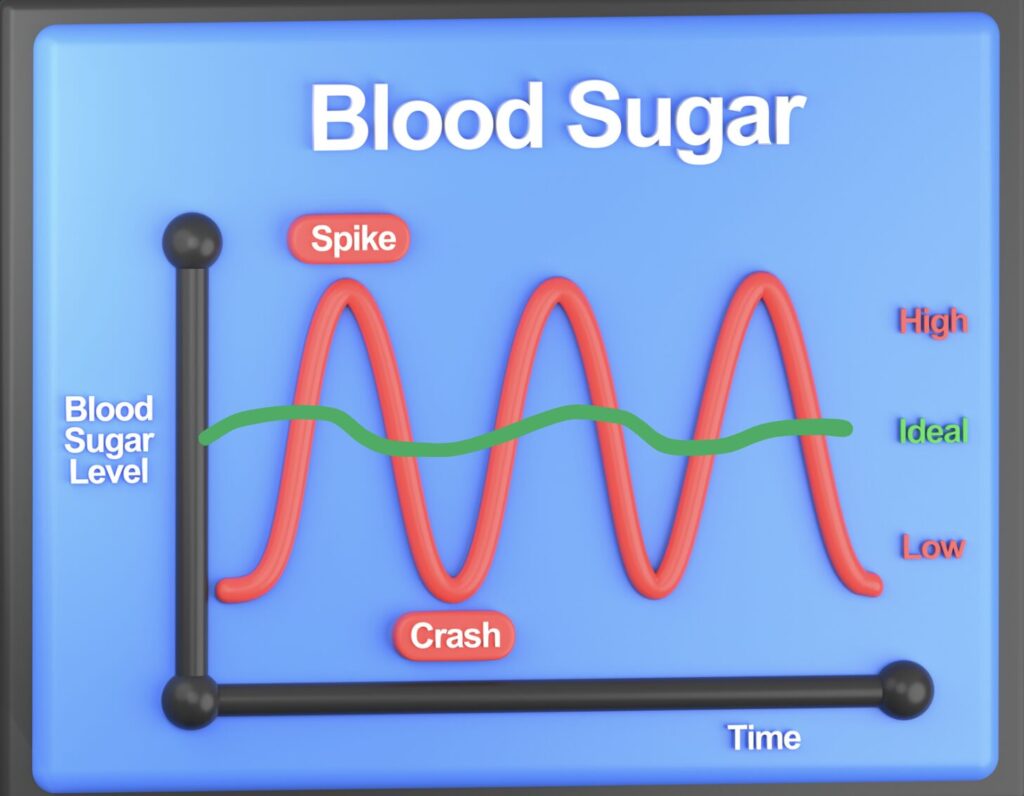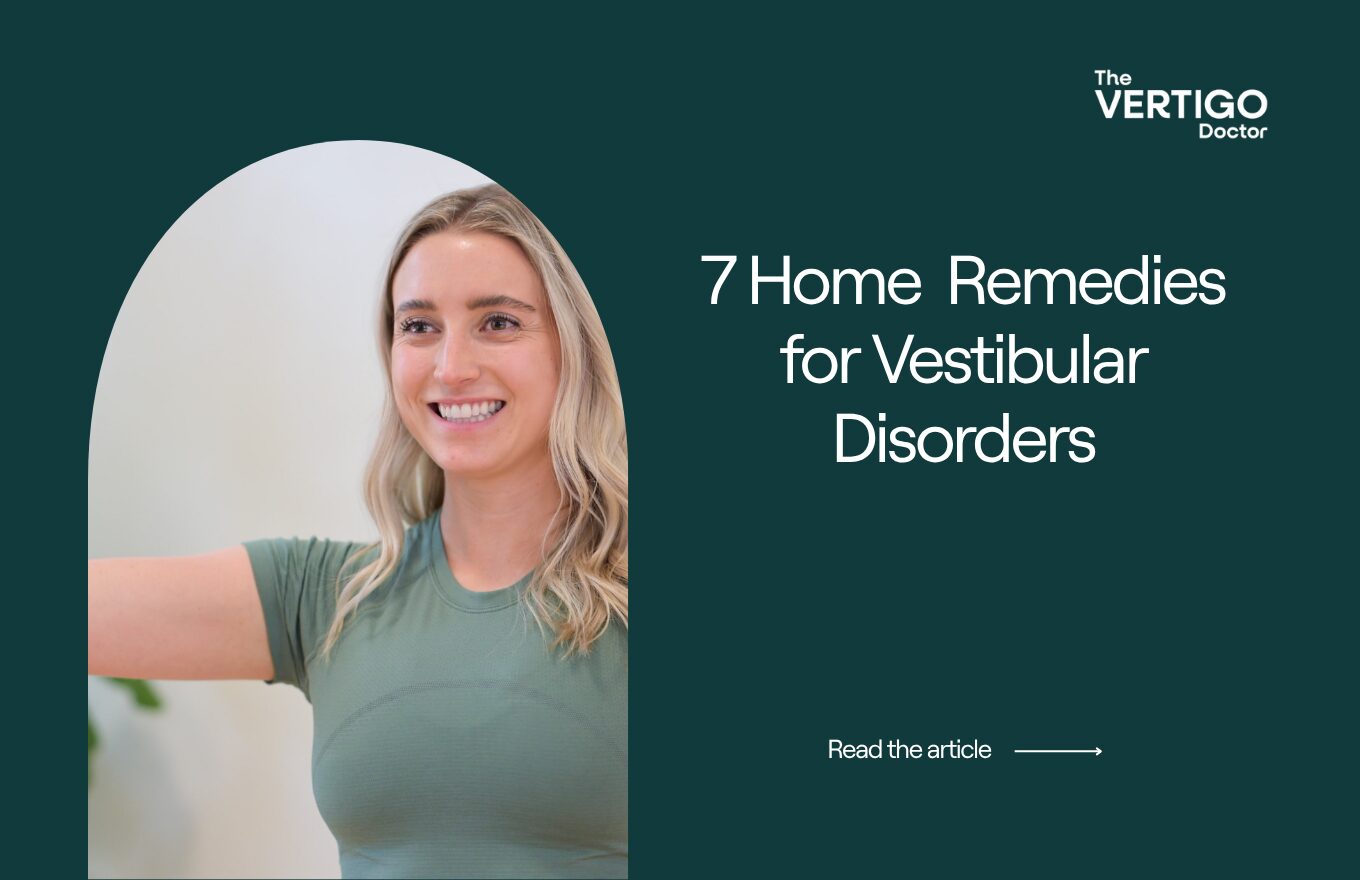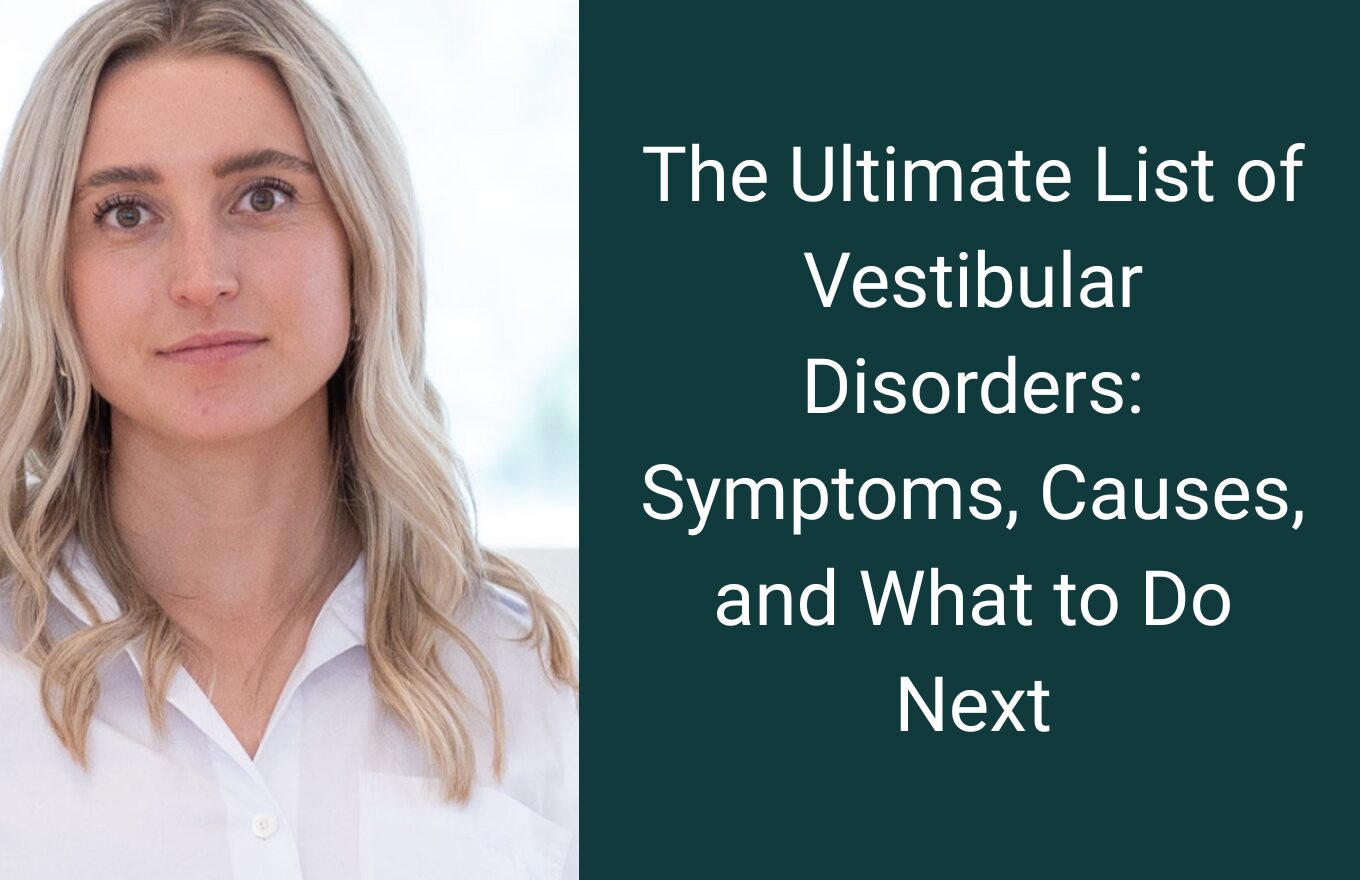Vestibular disorders, which affect the inner ear and brain’s balance systems, can significantly impact a person’s quality of life. Identifying and managing triggers is essential for those dealing with conditions such as vestibular migraine (VM), Vestibular Neuritis (VN), Meniere’s Disease, and persistent postural-perceptual dizziness (PPPD). Below, we explore common triggers for vestibular disorders and strategies to minimize their impact.
First, we need to discuss the differences between triggers and causes. The CAUSE of a disorder is much different than its trigger. For example, the cause of vestibular migraine is a genetic predisposition to migraine, while the cause of an attack could be stress or too much stimulation. the cause of vestibular neuritis is a viral infection in your inner ear, whereas a trigger for the symptoms could be being in a busy environment for too long. Today, we are talking about triggers for increased symptoms and attacks, rather than the causes.
Common Vestibular Disorder Triggers
1. Stress and Anxiety
Stress and anxiety are leading triggers for vestibular symptoms. They can worsen dizziness, vertigo, and imbalance due to the brain-gut axis and its influence on the vestibular system. The more stressed you are, the worse dizziness gets, and the worse dizziness gets the worse anxiety and stress can become! To manage these requires both managing the dizziness as well as the anxiety/stress. We call this cycle the dizzy-anxious-dizzy cycle, and it can be broken with the right tools!
Management Tip: Regular mindfulness practices like meditation, deep breathing, and cognitive-behavioral therapy (CBT) can help reduce stress-induced vestibular flare-ups.
2. Certain Foods and Drinks, and an Imbalanced Blood Sugar!
Specific foods and beverages, particularly those high in histamines or containing caffeine and alcohol, may exacerbate vestibular symptoms. Processed foods and artificial sweeteners are also common culprits.
In addition to this, it’s also SUPER common for people to get attacks when their blood sugar is uneven. We are meant to keep our blood sugar pretty even throughout the day, like the green line in the photo below, however most people’s blood sugar spikes and then dips frequently throughout the day, which will lead to attacks coming more frequently!
Management Tip: Keep a food diary to identify patterns, as well as a blood glucose monitor for a few weeks, which can be prescribed by your PCP.

3. Environmental Factors
Triggers such as bright or flickering lights, strong smells, loud noises, or crowded spaces can provoke vestibular symptoms, especially in vestibular migraine and PPPD. Remember, this is a bucket – the bigger you can make your bucket, the more easily you can manage your vestibular disorer. This is the concept and theory that we use in Vestibular Group Fit.
Management Tip: Use Avulux Glasses (code VERTIGODOC), noise-canceling headphones, Loops ear plugs, or avoid environments with overwhelming sensory input.
4. Sleep Deprivation
Inadequate or poor-quality sleep can exacerbate vestibular symptoms, including headaches, dizziness, and brain fog.
Management Tip: Establish a consistent sleep routine and ensure your sleep environment is optimized for restfulness (e.g., dark, cool, and quiet).
5. Weather and Barometric Pressure Changes
Changes in barometric pressure, particularly during storms, can trigger symptoms in vestibular migraine and Meniere’s disease patients. We love to recommend Weather X Ear plugs and its app which goes with it. This is because it will help you pinpoint when the weather is going to change and how to better regulate the pressure in your inner ear!
Management Tip: Monitor weather patterns and plan activities accordingly. Some patients find relief with pressure-stabilizing devices.
6. Head Movements or Position Changes
Sudden head movements or lying down in certain positions can provoke vertigo episodes in almost all vestibular diagnoses. To counteract this, we recommend re-learning how to move your head again! This can be done as a piece of a vestibular rehab protocol, or it can be done from Vestibular Group Fit in the “how to move your head again” module!
Management Tip: Work with a physical therapist or vestibular rehabilitation specialist to practice gradual head movement desensitization.
7. Hormonal Fluctuations
Hormonal changes, including those during menstrual cycles, pregnancy, or menopause, are common vestibular disorder triggers, especially for vestibular migraine warriors! We find that the inability to properly get rid of (detox) estrogen or other hormones can be a big issue. Targeted strategies like red raspberry leaf tea, extra protein, cruciferous veggies, and more can help!
Management Tip: Track hormonal patterns and discuss targeted interventions, such as magnesium supplements or hormone regulation therapy, with your doctor.
8. Exposure to Toxins or Chemicals
Exposure to mold, volatile organic compounds (VOCs), or other environmental toxins can worsen vestibular symptoms. This is especially true for individuals with sensitivities like mast cell activation syndrome (MCAS).
Management Tip: Focus on creating a low-tox environment at home by reducing plastics, avoiding scented products, and using air purifiers.
How to Identify Your Personal Triggers
Tracking your symptoms alongside potential triggers is the first step. Use a symptom journal or app to record:
- Date and time of symptom onset
- Activities leading up to symptoms
- Foods and beverages consumed
- Environmental conditions
- Emotional state
This process can help you and your healthcare provider identify patterns and develop a personalized management plan.
Do I Really need To Avoid All These Triggers?
The short answer? Nope, you proably do NOT need to avoid all of these all of the time.
If you went around avoiding all stress all the time, never eating anything that could possibly trigger you, slept perfectly, never moved your head, figured out the perfect strategy for your period, and more…. that would take over your whole life. I do not believe in this taking over your whole life forever. Taking away all these things can truly shrink your life – and I have sen it happen over and over again!
So, instead, what should you do?
Instead, I recommend building a bigger bucket. Yes, a bigger bucket. Think of your threshold for triggers as a big bucket. The bigger your bucket, the more triggers you can tolerate before it overflows. So, if you build yourself a bigger bucket, it will expand your life rather than shrink it!
How do we build a bigger bucket, you may ask? Well, that takes time and consistency with a few key points. First, be sure to balance your blood sugar, as as many nourishing foods as you can, socialize, sleep, exercise, breathe, take time for yourself, hydrate, and so much more! This can feel overwhelming at first, but by slowly adding these ach into your routine, rather than starting all at once, you will get there!
I see vestibular migraine warriors go from home bound or bed bound to walking around the block and going to their children’s weddings using this tactic – so yes it does work. And, it works better than most other things I’ve seen done in this space!
Want to know where we do this? Vestibular Group Fit, of course! The best place to be if you are a vestibular warrior, check it out here!
Vestibular Group Fit is crafted to offer you a personalized and holistic approach to managing your vestibular disorder—without breaking the bank. We’re here to support you every step of the way.
Final Thoughts on Vestibular Disorder Triggers
Understanding your vestibular disorder triggers empowers you to take control of your condition. By identifying patterns and making small lifestyle adjustments, you can significantly reduce the frequency and severity of symptoms. Remember to consult with a healthcare provider to create a comprehensive plan tailored to your needs.
With the right strategies, you can regain balance in both your body and life.





